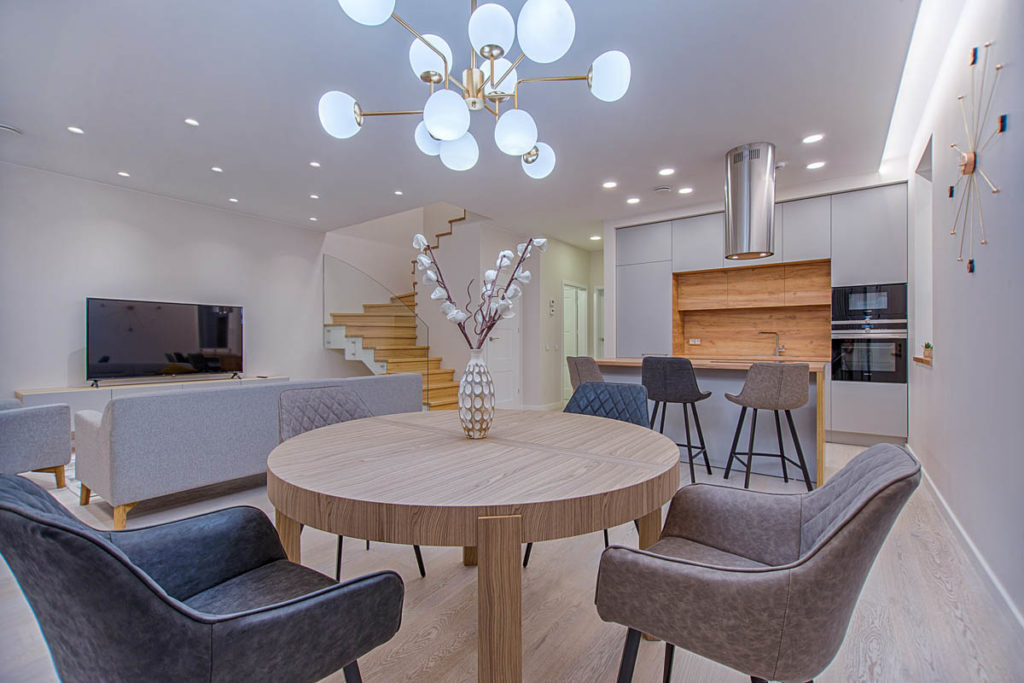We all need some light in our lives, but why let your choices for lighting design be limited? It’s time to take a step back and think about what you want from your home. What is it that really makes space feel like yours? Is there anything you would change if given the chance?
Lighting can be the difference between a space that is living and breathing or lifeless. Carefully consider what kind of mood you would like your home to portray, from lighthearted for entertaining guests to contemplative in order to find peace at the end of the day – intentional lighting will help establish this tone with ease!
Lighting design can transform any room into something new; they say good design starts with great lighting. Keep this in mind when designing or renovating because how we see things has been shown to affect just about everything – moods, productivity levels…the list goes on!
Lighting is an important element to consider when decorating your home. To get the right lighting for each room, there are a few things you should take into consideration before purchasing any fixtures. First of all, different rooms have different needs and shapes so it’s best to plan out what kind of light will suit these spaces the most – think about if parts need more or less task-oriented lights as well! Next up, make sure that their wattage matches with how much natural daylight comes in through windows or skylights: too bright can be uncomfortable while not enough leaves people stumbling around blindly! Finally, keep in mind furnishings such as rugs which may block some available outlets
Tips on selecting appropriate lighting at home
Lighting Design for your home
There are many different types of lighting, and the type you select should be determined by what is needed for each room. For example, in a kitchen where tasks need to be illuminated as much as possible while cooking or cleaning up after dinner it may make sense to invest in downlights; however, if looking for a relaxing atmosphere when eating at home then lamps would work better.
Lighting is an important element to our homes and can be used in various ways. Underlights, for example, are hidden lights that provide a stunning yet minimalist aesthetic when installed under kitchen cabinets. Mirror backlighting creates a subtle luxurious glow with the use of mirrors behind light fixtures or lamps which shine outwards onto surfaces like walls or windows from above.
Dim with confidence
Dimmable lights are an excellent way to add versatility and function throughout the home. By installing dimmable lighting in non-task areas such as living rooms, bedrooms, dining rooms or even hallways you can create dual role spaces that have both general background light as well as ambient light – perfect for transitioning from daytime activity into nighttime relaxation. And best of all? Dimmed lights also decrease energy usage and heat output while extending your bulbs’ lifespan by up to 30%.
The right light for every room
The optimal lighting design of your home can be achieved by taking the time to carefully plan a space that is well-lit and functional. The first step in planning for this type of environment should always start with identifying how many layers you would like to include, as one may not be enough! For example, overhead lighting could consist of decorative fixtures such as chandeliers or pendants while accent lighting on walls might come from floor lamps – adding warmth when needed.
Nathan Orsman, a New York-based lighting designer and recent graduate from the School for Visual Arts in Manhattan says that “The goal is to create contrast between the light at the center of the room and around the perimeter.” Without these dark moments he argues, everything becomes flat. It’s those subtle contrasts that create appeal.
The size of a chandelier can depend on the width of your dining room table. A 30-cm difference between the widest and narrowest points is recommended. If you’re looking for something to brighten up an average-sized kitchen, you may want to consider either two or three lights with about 20 cm in diameter each – depending on how many people are coming around during dinner time!
Lighting for a whole new experience
Materially speaking, there are many ways you can alter the interior design vibe by incorporating various types of lamps into your space: paper fabrications encourage ambient cozy settings while contrasting against harsh overhead lights; weaving textures from wood or natural fibers allow guests to enjoy pieces that celebrate craftsmanship without compromising on form.
A better lighting experience
Natural sunlight is a wonderful thing that should be included as much as possible when designing a new space. However, there are some considerations one needs to make if using artificial lighting too which may contribute towards creating darker spaces than desired so it’s best not to take any chances by being overly enthusiastic about installing them everywhere just yet.
Beautiful, intentional lighting design can enhance the natural beauty of your home and provide a safe haven for those seeking it. With an understanding that daylight will shift as time passes, be sure to aim at maximizing exposure when building or renovating. Take advantage of morning sunrises before work with light coming in through large windows from east-facing walls; use dimmer lights supplemented by lamps later on in the day during dinner parties – you’ll have guests mesmerized!

